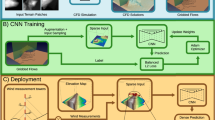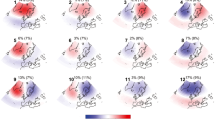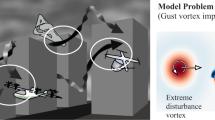Abstract
IN recent years, problems of meteorological analysis and forecasting in low latitudes have received increased attention. Although wind speeds through most of the troposphere are generally low and air masses are extensive and horizontally homogeneous, both local and macro-scale changes in the sign and intensity of vertical air motion give rise to significant and occasionally violent changes in weather. Consequently, successful short-range weather forecasting is an end worth achieving.
This is a preview of subscription content, access via your institution
Access options
Subscribe to this journal
Receive 51 print issues and online access
$199.00 per year
only $3.90 per issue
Buy this article
- Purchase on SpringerLink
- Instant access to full article PDF
Prices may be subject to local taxes which are calculated during checkout
Similar content being viewed by others
References
Sawyer, J. S., World Met. Org., Tech. Note, No. 45 (1962).
Johnson, D. H., and Mörth, H. T., Nature, 184, 1372 (1959).
Johnson, D. H., and Mörth, H. T., Mem. East African Met. Dept., Nairobi, 3, No. 8 (1961).
Worthley, L. E., Deviation of Geostrophic Wind from Measured Wind at 500 mb. (Univ. Hawaii, Hawaii Inst. Geophys., 1959).
World Meteorological Organization, Commission for Instruments and Methods of Observation, Abridged Final Rep. Sec. Session, Paris (1957).
Author information
Authors and Affiliations
Rights and permissions
About this article
Cite this article
RAMAGE, C. Relations between Weather, Winds and Pressures in Low Latitudes. Nature 201, 1206–1207 (1964). https://doi.org/10.1038/2011206a0
Issue date:
DOI: https://doi.org/10.1038/2011206a0



